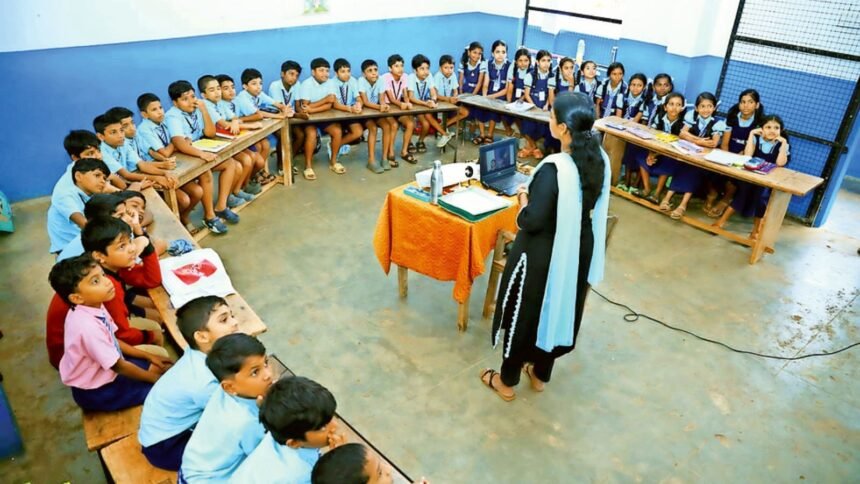The Kerala education department is considering replacing the traditional row-based seating layout in classrooms, in a move aimed at eliminating “backbenchers”.
Education Minister V Sivankutty on Tuesday said the government is looking to ensure that classroom layouts do not contribute to disparities among students. “We want to avoid the concept of backbenchers in our classrooms. The backbencher concept might adversely affect a student’s confidence. Our policy is to ensure equal opportunities for all students and no student should fall behind in studies or life,” he wrote in a Facebook post.
Sivankutty said the government would form an expert committee to study models adopted in other countries to dismantle hierarchical seating and recommend the most suitable approach for Kerala. “Various countries are following different models to do away with the concept of backbenchers. We have decided to appoint an expert committee to find the best model,” he added, urging public support for the initiative.
The move builds on changes already being experimented with in schools across the state. A few institutions in Kannur, Thrissur, and Kollam districts have introduced a horseshoe or U-shaped seating arrangement. In this model, students sit along the perimeter of the classroom, facing each other, allowing the teacher to engage with all students equally while moving around the centre.
The shift in layout has been partly inspired by popular culture. The recently released Malayalam film Sthanarthi Sreekuttan (2024), directed by Vinesh Viswanathan, follows the story of a backbencher who rebels against the traditional classroom structure. In the film’s climax, the old row-based layout is replaced with a U-shaped seating plan.
‘We had an enormous response after we tried the U-shaped plan’
The RCC lower primary school at East Mangad, Erumapetty in Thrissur district was one of the first schools in Kerala to introduce a new seating arrangement in classrooms.
Story continues below this ad
Headmistress Liji C R said, “From the outset of this academic year, there have been informal discussions about improving the learning standards of students. Some of the teachers then mentioned the film and recalled their own experience in school days as backbenchers. We thought about abolishing the back bench system, starting with Class I. Accordingly, seats were arranged in a U-shaped pattern.”
The headmistress said the response was “enormous”, and students and teachers alike were happy about the new arrangement.
“Teachers could give equal attention to all students who sat in a single row. We would give a message to the students that all of them are equal and we are taking care of each and every student. Otherwise, a backbencher will remain a backbencher throughout his school life. Parents also gave good feedback, as their children started picking up lessons faster,’’ she said.
Liji said the U-shaped classroom would be most suitable if the student strength is around 25. “In Classes IV and V, we have more students and hence the seats were arranged in two U-shaped rows,’’ she said.








